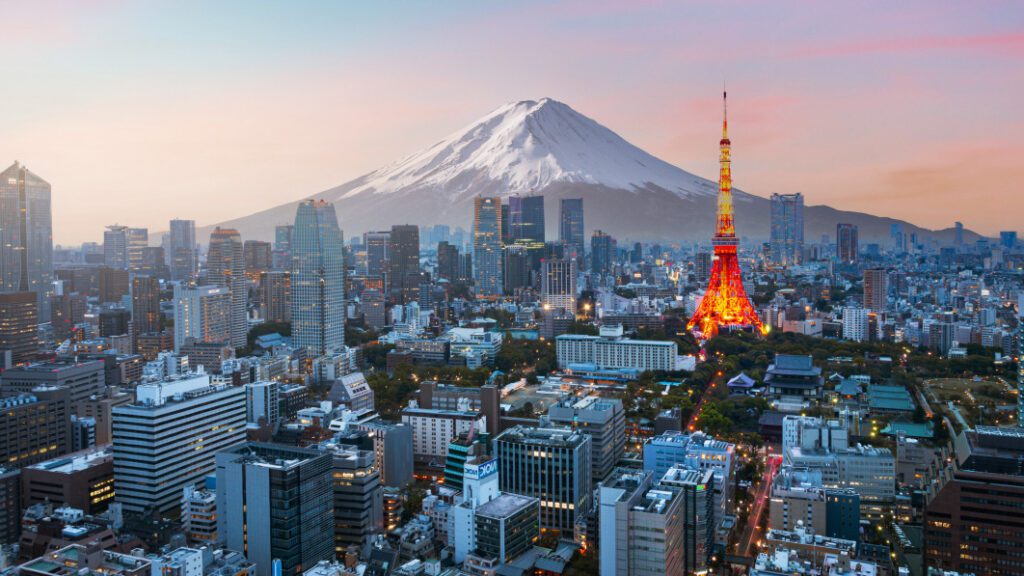Opinion: Go to Japan

I’ve been lucky enough to travel to Japan three times in my duties as an editor for Autoblog. I can’t wait to go back. It’s an amazing place, rich in history, art, culture, food and, of course, cars. The memories I’ve made there will last a lifetime. If you’re reading this, you’re surely also an appreciator of all things automotive. Considering that, I urge you to go to Japan.
There are so many reasons to do so. Let me name a few.
JDM cars in the wild
The automotive specimens you see on Japanese roads are novel to American eyes, whether they’re kei cars, unique versions of cars we get here, or oddly named vehicles like the Honda That’s or Isuzu Mysterious Utility Wizard. It’s neat to see cars that didn’t really take off here that are actually pretty common on Tokyo highways; The Toyota C-HR just looks different on the backdrop of a Tokyo highway.
You also see neat things like those little lace doilies on the headrests of a lot of cars.
Museums
The car collections in Japan are truly special. Again, I’m fortunate, but I’ve been to some pretty amazing car museums. I think the Honda Collection Hall rivals them all. The sheer number of cars and motorcycles on display, all in running condition, is jaw-dropping. Whether it’s the Super Cub, any Type R you can think of, or one of Ayrton Senna’s F1 cars, you can see it in the flesh at this museum. It sits on the grounds of Twin Ring Motegi, which has its own history having hosted various race series over the years. I said it back in 2018, and I’ll say it again: If you are an automotive history fan, I think the Honda Collection Hall at Motegi is a pilgrimage to be made, and it’s an absolute must if you’re a Honda fan.
On my most recent trip to Japan, I was able to visit Nissan’s Zama Heritage Collection in a decommissioned factory outside of Tokyo. It’s another incredible walk through an automaker’s hostory, from racing to mergers to storied nameplates and more. I tried to capture what I could on camera, but there is simply too much to document. While the building itself is humble — more warehouse than museum — the holiness of the sheet metal one can see face to face leaves you coming away awestruck.
Like I said, I can’t wait to get back to Japan. There are more car collections and automotive history to see. The Toyota Automobile Museum in Aichi and Mazda Museum in Hiroshima, for instance, are high on my list. Some day …
Car shows
The Japan Mobility Show, essentially the Tokyo Motor Show redux, is what brought me to Japan most recently. While it feels like car shows in America are going the way of the CD changer, the Japan show was absolutely bustling. It was upbeat and exciting. It was also super interesting. Like any good car show, I got to see the newest vehicles and technologies that will hit our roads soon. I also got to see many cars available in other global markets. There were weird campers, and strange mobility devices, and off-road vans. It was neat!
Japan also hosts the Tokyo Auto Salon, which is more akin to a Japanese SEMA, with modified cars and racing vehicles on display. I’ve yet to visit that one, but it’s on the list.
Then there are the more informal gatherings. Autoblog News Editor Joel Stocksdale was able to visit the Daikoku Parking Area. It’s a literal rest area off an expressway where owners and enthusiasts meet to show off and take in some impressive rarities, from sportified kei cars to luxury vans to expensive super cars.
Go-kart tours
I normally wouldn’t recommend driving in Tokyo — it’s congested, expensive and generally stressful, especially if you’re used to driving on the right side of the road — but karting around the city streets looks super fun. On a pre-pandemic trip, while I used the trains (more on those later) to explore the city (in search of a cat café) after hours, I saw a bunch of people dressed up as Mario Kart characters karting on the streets of Akihabara. Despite the rain, the drivers had smiles on their faces. It seems kind of sketchy mixing it up with real traffic, but if I had more time to plan and execute on the plan, I’d have given it a shot. Maybe next time.
Trains
While car culture is a big reason to go to Japan, trains are the best way to get around. They’re affordable, punctual, clean, safe and easy to navigate. You can get all over the city and beyond. If you get the chance, take the bullet trains, or shinkansen. They’re impressive examples of transportation engineering, and they can get you from one city to another in the time it takes to consume two beers and an ice cream, which you can purchase on the train. You get to see the cities and the countryside, even Mt. Fuji, as you speed by at 150+ miles per hour.
And more
There’s so much more to see in Japan, automotive and otherwise, and I intend to go back whenever I can both professionally and off the clock. I need to get to Suzuka Circuit, for instance, and see Toyota’s Woven City. I’d like to do a touge tour, and drive some rented JDM hotness on some mountain passes. There are more historical sites to visit, shopping to do, ramen to eat and cats to pet.
I know it’s a long way to travel, and flights are expensive, but the experience is worth it for anyone, but especially for car fans. Once you get there, there’s so much to see and experience (and, at least right now, the exchange rate is pretty favorable, and deals abound once you’re on the ground). If you’re a car enthusiast, and you’re going to save up for a well-earned vacation, you should go to Japan.
Related video:



